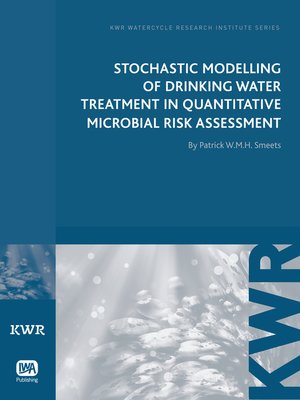Stochastic Modelling of Drinking Water Treatment in Quantitative Microbial Risk Assessment
ebook ∣ KWR Watercycle Research Institute
By Patrick W. M. H. Smeets

Sign up to save your library
With an OverDrive account, you can save your favorite libraries for at-a-glance information about availability. Find out more about OverDrive accounts.
Find this title in Libby, the library reading app by OverDrive.



Search for a digital library with this title
Title found at these libraries:
| Library Name | Distance |
|---|---|
| Loading... |
Special Offer: KWR Drinking Water Treatment Set - Buy all five books together and save a total £119!
Safe drinking water is a basic need for all human beings. Preventing microbial contamination of drinking water is of primary concern since endemic illness and outbreaks of infectious diseases can have significant social and economic consequences. Confirming absence of indicators of faecal contamination by water analysis only provides a limited verification of safety. By measuring pathogenic organisms in source water and modelling their reduction by treatment, a higher level of drinking water safety can be verified.
This book provides stochastic methods to determine reduction of pathogenic microorganisms by drinking water treatment. These can be used to assess the level and variability of drinking water safety while taking uncertainty into account. The results can support decisions by risk managers about treatment design, operation, monitoring, and adaptation. Examples illustrate how the methods can be used in water safety plans to improve and secure production of safe drinking water.
More information about the book can be found on the Water Wiki in an article written by the author here: http://www.iwawaterwiki.org/xwiki/bin/view/Articles/Quantifyingmicro-organismremovalforsafedrinkingwatersupplies
Safe drinking water is a basic need for all human beings. Preventing microbial contamination of drinking water is of primary concern since endemic illness and outbreaks of infectious diseases can have significant social and economic consequences. Confirming absence of indicators of faecal contamination by water analysis only provides a limited verification of safety. By measuring pathogenic organisms in source water and modelling their reduction by treatment, a higher level of drinking water safety can be verified.
This book provides stochastic methods to determine reduction of pathogenic microorganisms by drinking water treatment. These can be used to assess the level and variability of drinking water safety while taking uncertainty into account. The results can support decisions by risk managers about treatment design, operation, monitoring, and adaptation. Examples illustrate how the methods can be used in water safety plans to improve and secure production of safe drinking water.
More information about the book can be found on the Water Wiki in an article written by the author here: http://www.iwawaterwiki.org/xwiki/bin/view/Articles/Quantifyingmicro-organismremovalforsafedrinkingwatersupplies







